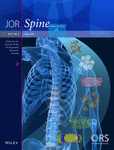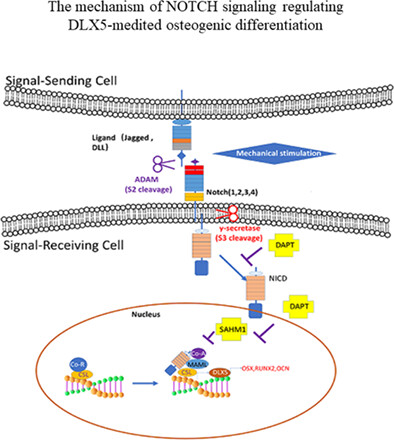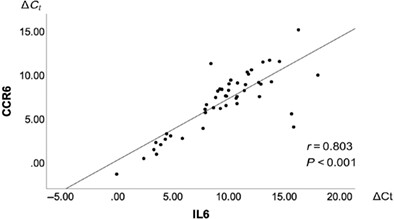Journal list menu
Export Citations
Download PDFs
ISSUE INFORMATION
EDITORIAL
A successful PSRS special issue and Spine across the globe
- First Published: 22 June 2023
REVIEW
The association between low virulence organisms in different locations and intervertebral disc structural failure: A meta-analysis and systematic review
- First Published: 16 February 2023
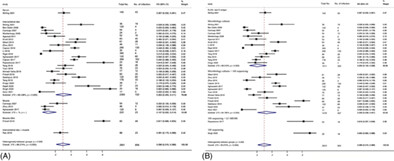
This study demonstrates the prevalence of infection in different tissue and serum samples in patients with disc structural failure. There seems to be a significant association between disc infection and endplate changes. Currently there is insufficient evidence to implicate low virulence organisms' infection as a cause for intervertebral disc degeneration, low back pain, and disability. Standardizing sample collection, standardizing testing methods, and having a consensus on the definition of sampling contamination, with consistent reporting of multicenter registry studies will allow more meaningful analysis in the future.
RESEARCH ARTICLES
Socioeconomic status, mental health, and nutrition are the principal traits for low back pain phenotyping: Data from the osteoarthritis initiative
- First Published: 14 February 2023
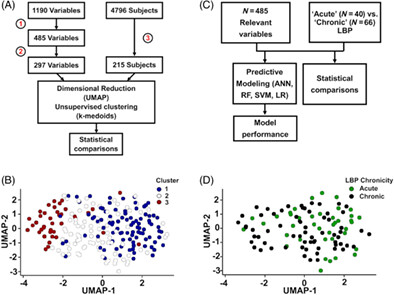
We identified individuals in the Osteoarthritis Initiative with low back pain and developed a machine learning approach to screen hundreds of variables for the most influential in pain chronicity and severity. We found that socioeconomic factors played a greater role than traditional biomedical descriptors of spine disease (age, sex, BMI).
Evaluation of instrumentation and pedicle screw design for posterior lumbar fixation: A pre-clinical in vivo/ex vivo ovine model
- First Published: 13 January 2023

This study compared manual/conventional vs rotary, osseodensification (OD) instrumentation of the osteotomy while simultaneously testing the effect of macrogeometry modifications (traditional versus compacting thread design) of pedicle screws in a large, translational preclinical animal model. Lumbar spinal fusion procedures have experienced a growth toward instability and deformity conditions, primarily among the elderly (65+ years old) and patients diagnosed with co-morbidities such as osteoporosis. Literature has indicated that biomechanical success is influenced by a variety of variables (i.e., device's geometry, osteotomy preparation, etc.). The presented work, data and analyses, demonstrated that additive, rotary osseodensification instrumentation yielded improved mechanical and histologic results in lumbar spine stabilization relative to the conventional instrumentation technique.
MRI-based degeneration grades for lumbar facet joints do not correlate with cartilage mechanics
- First Published: 11 January 2023
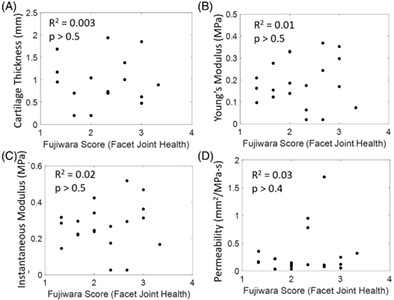
To understand the ability of current clinical MRI techniques to assess the health of the facet joint and facet joint articular cartilage, we compared MRI-scores of facet joint health (Fujiwara scale) with facet joint cartilage mechanics and structure. Cartilage mechanics and structure showed no correlation with Fujiwara scores.
DLX5 regulates the osteogenic differentiation of spinal ligaments cells derived from ossification of the posterior longitudinal ligament patients via NOTCH signaling
- First Published: 28 January 2023
Analysis of intervertebral disc CCR6 and IL-6 gene levels with short-term postoperative low back pain after spinal fusion in lumbar degenerative disease
- First Published: 22 February 2023
An in vitro comparison of three nucleus pulposus removal techniques for partial intervertebral disc replacement: An ultra-high resolution MRI study
- First Published: 12 December 2022
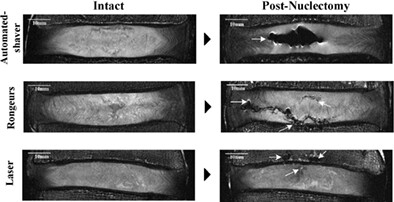
Multiple techniques have been considered to perform a nuclectomy, however, the advantages and disadvantages of each are not well understood. This in vitro biomechanical investigation on human cadaveric specimens aimed to quantitatively compare three nuclectomy techniques performed using an automated shaver, rongeurs, and laser.
Phase 1 evaluation of an elastomeric nucleus pulposus device as an option to augment disc at microdiscectomy: Experimental results from biomechanical and biocompatibility testing and first in human
- First Published: 13 February 2023
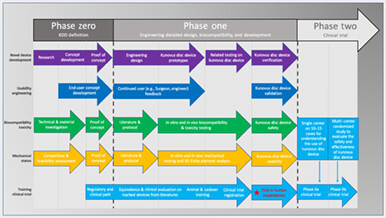
The biocompatibility testing confirmed that all constituents of the novel disc spacer are biocompatible. The mechanical tests on the surrogate annulus model confirmed that the elastomeric nucleus device may mimic native disc behavior in mechanical tests, offering an effective way for treating lumbar disc herniation by way of Phase II and subsequent clinical trials or postmarket surveillance in the future.
Biomechanical evaluation of a novel biomimetic artificial intervertebral disc in canine cervical cadaveric spines
- First Published: 21 February 2023
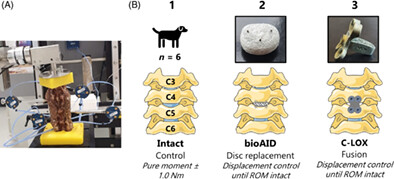
This study assessed the initial biomechanical effect of the bioAID on the kinematic behavior of the canine spine, an ex vivo biomechanical study in 6-degrees-of-freedom was performed. The results that the bioAID can mimic the kinematic behavior of the replaced intervertebral disc and preserves that for the adjacent levels better than fusion.
Influence of macrophage polarization in herniated nucleus pulposus tissue on clinical efficacy after lumbar discectomy
- First Published: 26 January 2023
Multiplex epigenome editing of ion channel expression in nociceptive neurons abolished degenerative IVD-conditioned media-induced mechanical sensitivity
- First Published: 17 March 2023
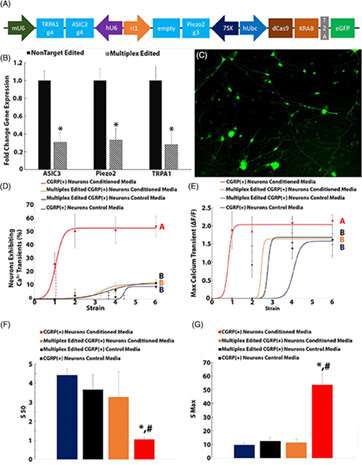
Multiplex CRISPR epigenome editing of ion channel expression in nociceptive neurons abolished degenerative IVD-induced mechanical nociception in an in vitro model of discogenic back pain. These results demonstrate multiplex epigenome editing of nociceptive neurons as a potential neuromodulation strategy for discogenic back pain and other chronic pain conditions.
Galectin-3 and RAGE differentially control advanced glycation endproduct-induced collagen damage in murine intervertebral disc organ culture
- First Published: 28 March 2023

This study investigates the role of the advanced glycation endproduct (AGE) receptors RAGE and Gal3 in modulating collagen damage using intervertebral disc organ culture models with genetically modified mice. AGE challenge induced collagen damage and altered biomechanical properties in IVD organ cultures ex vivo. Gal3 was protective and RAGE presence was necessary for AGE-induced collagen damage.




